Recent expo at a Silk Road oasis shows this arid destination is not only preserving tradition but also innovating, attracting global visitors, Erik Nilsson and Hu Yumeng report in Dunhuang, Gansu.
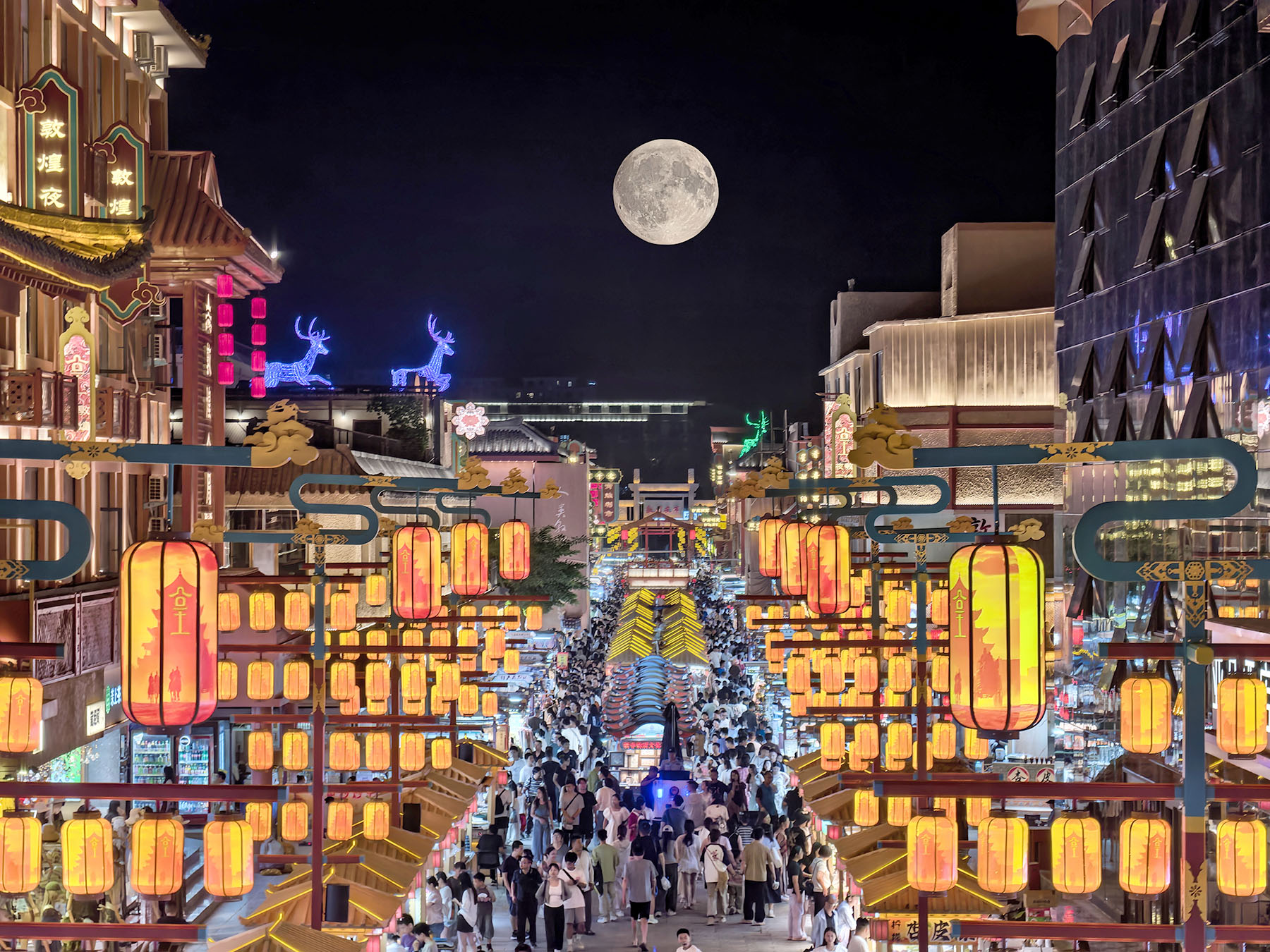
Almost no one thinks of the fiddle when they think of the Silk Road. But American folk musician Kyle Dillingham does. In fact, it's this legacy, spanning centuries and continents, that inspired him to travel all the way from Oklahoma in the United States to Dunhuang, Gansu province.
Dillingham journeyed to the modern city that rises from the desert oasis that once served as a critical juncture on the ancient trade network to perform at the recent Eighth Silk Road (Dunhuang) International Cultural Expo, held in late September.
"Without the Silk Road, we might not have the traditional American fiddle music we know today," he explains.
"You wouldn't have traditional fiddle culture in Oklahoma, where I come from. The origins of the bowed string instrument were probably somewhere in Central Asia, and it made its way along that Silk Road into Europe and became a European tradition."
READ MORE: Journey through time, stars and flavors
One reason Dillingham has attended the expo six times is that Gansu has a sisterhood relationship with Oklahoma.
"It's really exciting to participate in the future of the modern Silk Road," he says.
This inspired him to write the song Old Friend.
He explains the inspiration for the lyrics, saying: "There are the ups and the downs, the ebb and the flow, and the coming and the going. But ultimately, in the end, we are old friends looking toward a bright future of great friendship and strength."
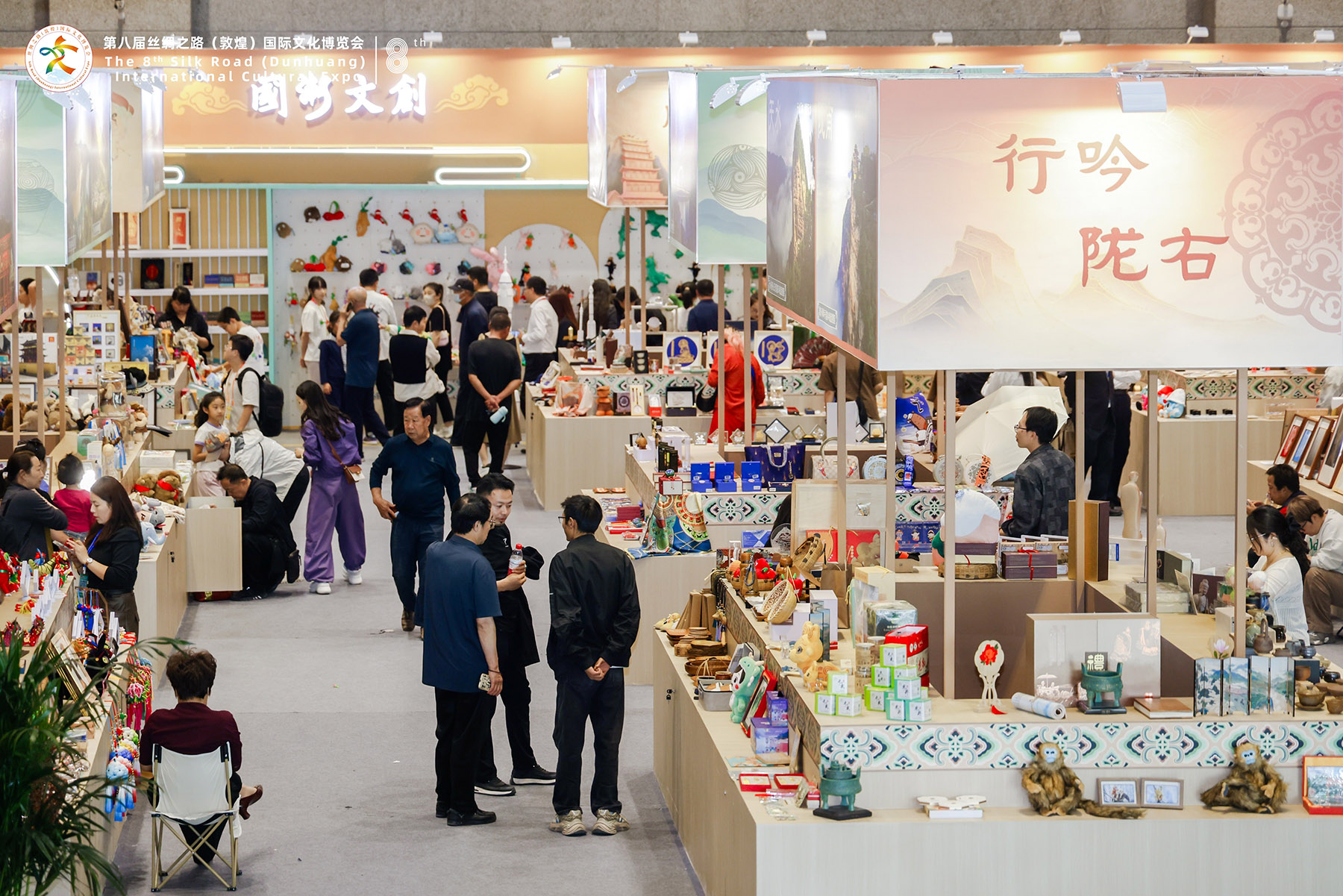
Over 1,200 Chinese and international participants, including officials, artists, scholars, and schoolchildren, joined performances, forums and exhibitions, in addition to visiting classic and emerging destinations in Dunhuang.
Bangladeshi artist Mong Mong Sho, who joined 20 artists from 12 countries to retrace the Silk Road across Gansu in August, says the two paintings he displayed at the expo convey his feelings of fusing the ancient and modern, the local and global.
"We had a conversation with history, culture and nature. At the Mogao Caves in Dunhuang, facing those murals and statues that have been sleeping for thousands of years, it felt as if we were having a timeless conversation with ancient souls. The dancing figures of the flying apsaras and the colors deeply touched my heart," he says.
"As the Buddhist stories etched here have roots in the Indian subcontinent, I find powerful echoes of my own culture and history in every mural and sculpture."
He included depictions of flying fish from Bangladesh, which also remind him of the fishing culture in Iceland, where he also lived.
"My flying fish continually strive to learn from every layer of this magnificent art, absorbing its wisdom and beauty. The lively flying fish are me and my companions — a new generation of artists and explorers, bringing a fresh, imaginative perspective to a place steeped in tradition. This flying fish symbolizes my journey and my hope for a bright future.
"It represents my personal dream of taking flight and connecting my story to the grand shared chapter of the Silk Road. It's about honoring the past while celebrating the boundless possibilities of the future."
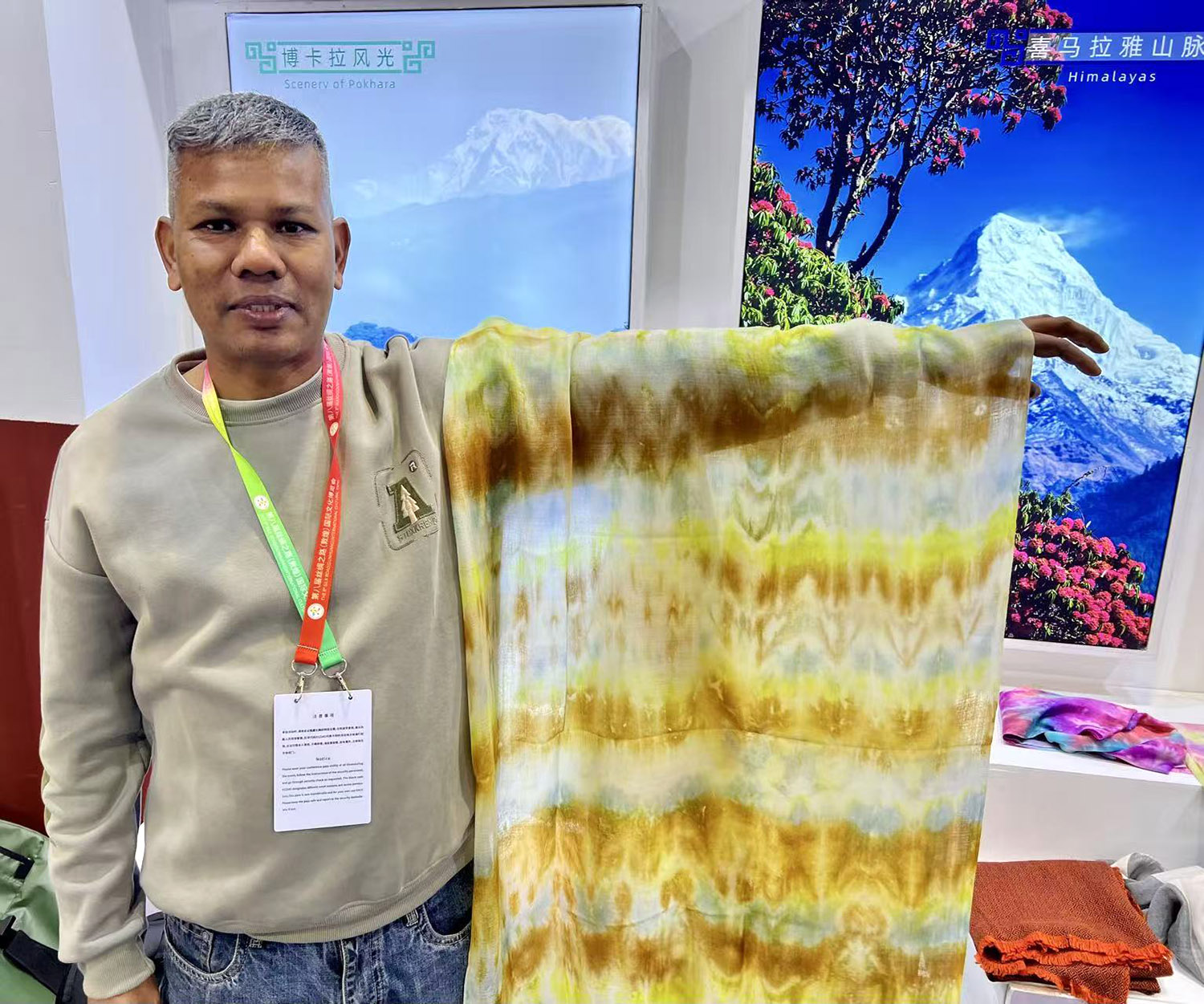
More than camels
Sho joined expo participants from 97 countries and regions, and eight international organizations.
Merchants and craftspeople from countries involved in the Belt and Road Initiative displayed their country's cultural products, including Egyptian papyrus paintings, Russian nesting dolls and Uzbek rugs.
Yunnan-based Ghanaian vendor Davor Richard says he particularly enjoyed interacting with local buyers at his country's booth and encountering the camels and desert outside the venue.
He says the first-day sales of his wares, such as tribal masks, shea butter and hand drums, were brisker than in larger Chinese cities like Shanghai, Beijing, and Hangzhou, Zhejiang province.
Nepalese clothing designer Babu Ram Chaudhary says he also sold his cashmere shawls, hats, sweaters, and socks faster than expected, especially compared to events in larger Chinese cities.
"It takes a lot of time to ship goods from Nepal to here — two weeks or more," he says.
"So, they want to buy more of my products here, but I can't provide them now."
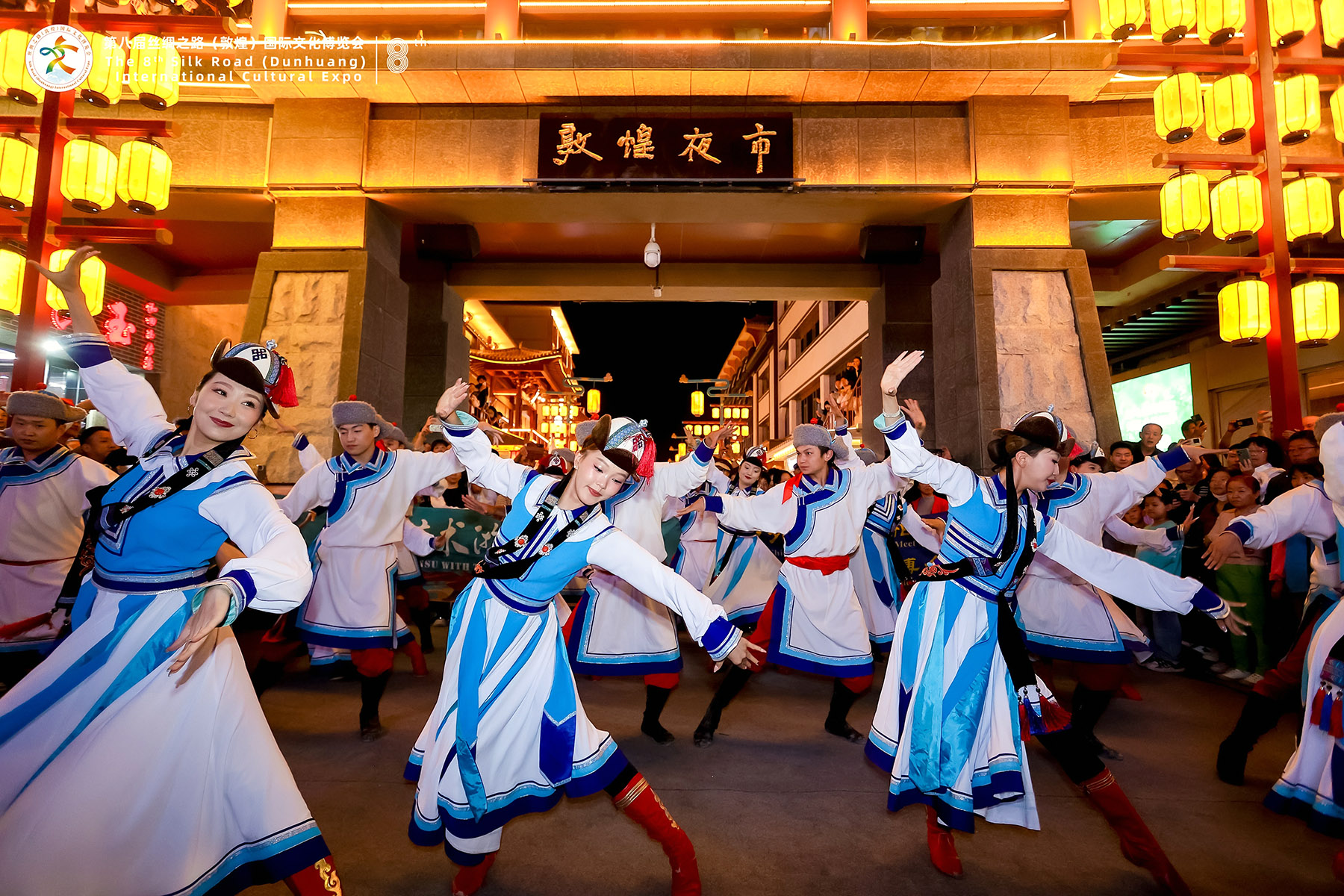
He hopes improved connectivity through the BRI will accelerate the speed and expand the scope of trade in cultural products, such as Nepalese garments and Chinese snacks.
"The Belt and Road will provide a better way to ship goods from China to Nepal and Nepal to China," Chaudhary says. "That will make for very good cultural interactions."
The concept that the BRI isn't just about the trading of physical goods but also the exchange of people and ideas is a primary theme of the expo. So is the idea that this is a reimagining of the Silk Road's heritage.
The booth belonging to Thailand, the guest of honor country, didn't even offer items for sale, but instead engaged in a free flow of traditional concepts through displays about lesser-known dimensions of the country best-known for its beaches and cuisine. They included exhibits about khon masked dramas, the Songkran New Year festival, nuad Thai massage, and nora dance.
Thai Culture Ministry Permanent Secretary Prasop Riangngoen points out that Buddhism, which continues to shape his country's customs, traveled along the ancient Silk Road to eventually reach Southeast Asia.
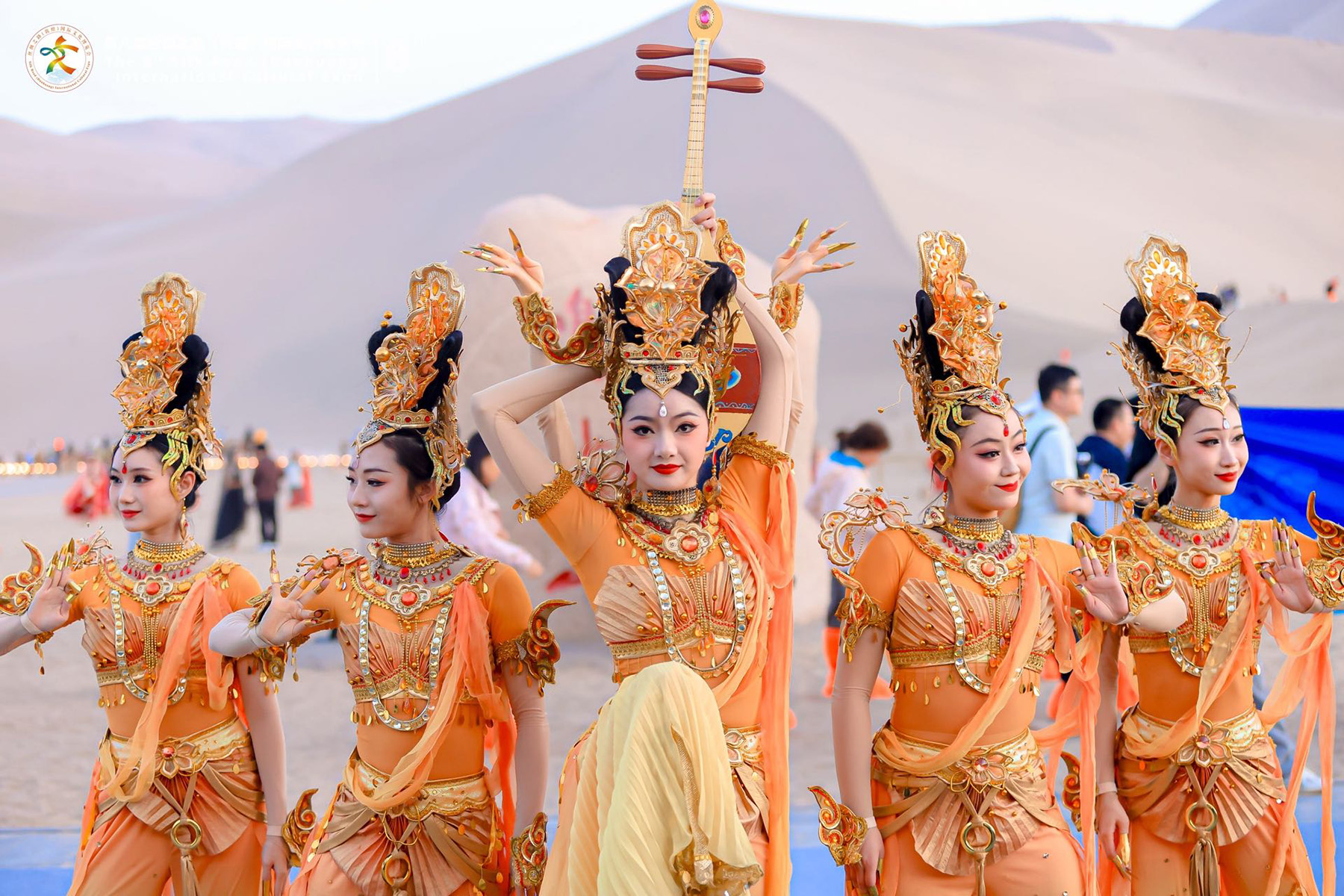
Updating the past
Visitors to the Dunhuang Studies exhibition area not only learned about how this legacy is being preserved but also experienced how new technologies are being used to protect and restore ancient relics.
They walked through physical replicas of the Mogao Caves adorned with murals and statues, or experienced immersive digital explorations using virtual reality, enabling them to "see" the caves closed to the public.
Imagery from the caves featured heavily in the neighboring hall, which was devoted to the continuation of traditional Dunhuang culture and the advent of creative innovations using its media and motifs.
Artisans showcased hunks of minerals crushed to create the pigments used to paint the cave murals centuries ago, and wood-burned fans featuring icons like Hexi horses and wheat-straw embroidered camels.
These age-old art forms were displayed alongside nunchucks, keyboards and skateboards decorated with symbols of Dunhuang, such as the nine-color deer, thousand-armed Guanyin (the Bodhisattva of Compassion) and flying apsaras, who pluck pipa (lutes) idiosyncratically held behind their heads.
China Tourism Academy President Dai Bin hails such novel cultural creations.
"New cultural spaces and tourism scenarios created by young entrepreneurs and creative teams are both critically acclaimed and popular among locals and visitors," he says.
Dunhuang Printing House, for instance, offers do-it-yourself arts-and-crafts experiences.
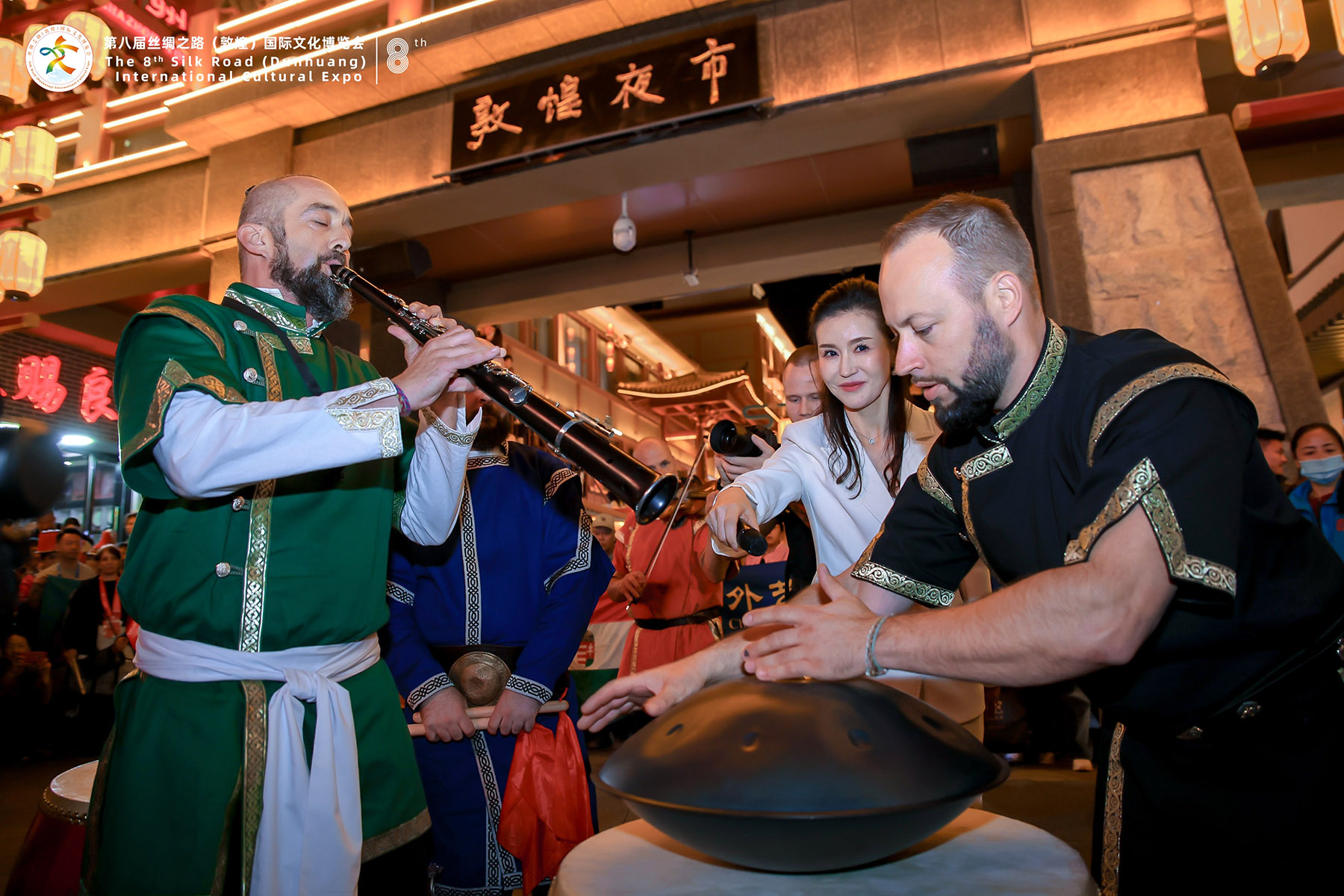
Visitors can fill notebooks with ink stamps featuring Dunhuang themes. Rubber stamps are connected by ceiling pulleys to glass bulbs filled with colored sand, which bob up and down as users stamp the paper, making them dance. Guests can also fashion items like ceramic coasters, embossed prints, and lacquerware, for a moderate fee.
Dai explains that these kinds of bookstores and workshops are emerging as visitors seek experiences beyond just attractions.
"In the past, visitors would typically visit the Mogao Caves, Xuanquan's ruins, Singing Sand Dunes, and Crescent Moon Lake. But today, besides these cultural heritage sites, we have many tourism performances … through which visitors can experience the richness and historical depth of Dunhuang's culture."
ALSO READ: 'Pass'ing on Silk Road rituals
He hopes that the creatives updating the cultural industry will think more outside the box.
"Can the Dunhuang Expo diversify its art forms? Symphony and dance are art forms, but what about street dance? What about e-sports as a modern trend?" he asks.
He hails the inclusion of a youth panel at this year's event as a compass pointing toward tomorrow.
"Any endeavor or industry that fails to attract young people has no future. This year's expo highlights youth, which is very practical and can help elevate the platform's quality," he says. "To attract youth, keywords like 'fashion', 'vitality', and 'future' are essential.
"While young people may appreciate cultural heritage, they're more interested in seeing what the future holds."
What this means for this desert destination in the years to come is something that only the sands of time will tell.
Contact the writers at erik_nilsson@chinadaily.com.cn


